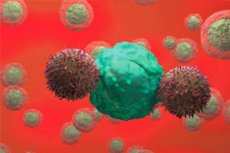New publications
CAR-T in Lupus: A Breakthrough or Too Early to Rejoice?
Last reviewed: 09.08.2025

All iLive content is medically reviewed or fact checked to ensure as much factual accuracy as possible.
We have strict sourcing guidelines and only link to reputable media sites, academic research institutions and, whenever possible, medically peer reviewed studies. Note that the numbers in parentheses ([1], [2], etc.) are clickable links to these studies.
If you feel that any of our content is inaccurate, out-of-date, or otherwise questionable, please select it and press Ctrl + Enter.

For some people with systemic lupus erythematosus (SLE), standard drugs don’t work or relapse. CAR-T cell therapy, long used in oncohematology, has shown very strong responses in early SLE studies: symptoms and lab signs subsided quickly, and patients were sometimes able to stop other drugs. But this is still phase I: the goal is safety, not proof of a permanent cure.
Why CAR-T in SLE?
In SLE, the immune system “goes crazy”: B cells produce autoantibodies, attacking tissues (joints, skin, kidneys, etc.). CAR-T retrains the patient’s own T cells to recognize and deeply “cleanse” B cells throughout the body – “overloading” the immune system with the hope of long-term remission.
What does it look like step by step?
- Screening: confirm SLE activity, collect treatment history.
- Leukapheresis: Blood is taken and T cells are isolated.
- Genetic modification of T cells in the laboratory (several weeks).
- Lymphodepletion: Short course chemotherapy frees up a “niche” for CAR-T.
- Single CAR-T infusion + 1-2 weeks hospitalization for observation.
- Further monitoring: at first frequently (once every couple of weeks), then less frequently; the immune system gradually recovers.
What are they already seeing in early trials?
- Rapid clinical and laboratory improvement, including severe manifestations (eg, kidney damage).
- After being “zeroed,” B cells return “naive”—they do not attack their own tissues.
- Some patients discontinue concomitant therapy.
This does indeed appear to be a qualitatively different effect compared to conventional anti-B-cell drugs, which do not always produce such profound and total B-cell depletion.
Risks and what can go wrong
CAR-T is not a harmless IV; due to the powerful activation of the immune system, the following are possible:
- Cytokine syndrome (CRS): fever, drop in blood pressure;
- Neuro-phenomena (ICANS): from mild confusion to seizures (rare);
- Infections: Immunity is temporarily suppressed by chemotherapy and CAR-T itself.
Therefore, close hospitalization and monitoring by an experienced team are necessary; most problems can be managed with supportive care.
Who is being offered it now?
For now, it's for severe patients who have had many failures on standard regimens (often involving the kidneys). Most protocols are phase I (dose selection/safety). Then we need phases II-III on larger groups to understand:
- how long will the remission last;
- who exactly it helps (selection biomarkers);
- is it possible and necessary to repeat cycles;
- what is the cost/availability and safety profile in "real life".
Summary
CAR-T in SLE is a real candidate for a paradigm shift (remissions without permanent immunosuppressants seem achievable). But it is too early to say “cure for lupus”: the evidence base is still being formed, and the method remains complex, expensive and risky without the right team and selection.
If you like, I can make a reminder for patients (“what to ask your doctor before CAR-T”) or a short version for doctors (inclusion criteria, response predictors, CRS/ICANS monitoring).
